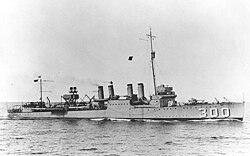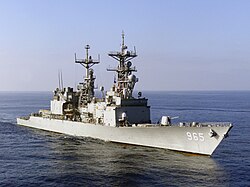
| Ships of the United States Navy | |
|---|---|
 | |
| Ships in current service | |
| Ships grouped alphabetically | |
| Ships grouped by type | |
This is a list of destroyers of the United States Navy, sorted by hull number. It includes all of the series DD, DL, DDG, DLG, and DLGN.
Contents
- Destroyer types listed
- Other destroyer types
- Destroyer leaders
- Guided missile destroyers
- Ship list
- See also
- References
- External links
CG-47 Ticonderoga and CG-48 Yorktown were approved as destroyers (DDG-47 and DDG-48) and redesignated cruisers before being laid down; it is uncertain whether CG-49 Vincennes and CG-50 Valley Forge were ever authorized as destroyers by the United States Congress (though the fact that the DDG sequence resumes with DDG-51 Arleigh Burke argues that they were).































































